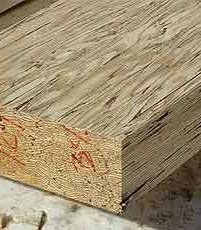A Hansen Pole Buildings client recently called his Building Designer Rick. The client was concerned as three ply glulams were provided for his pole building kit package, instead of the 4×6 and 6×6 solid sawn columns which were on his plans. He is concerned his inspector will give him trouble about this and would like an e-mail stating all is good.
Always happy to oblige Rick and help out a client, this is what I wrote:
“At no extra cost to you, your building columns have been upgraded from solid sawn columns, to glulam columns.
The strength of any member which resists bending, is primarily determined by its fiberstress in bending (known as Fb) multiplied by the section modulus (Sm) of the member.
For information on the solid sawn columns, this makes for good reading: https://www.hansenpolebuildings.com/blog/2014/08/lumber-bending/
The design specifications for the Titan Timbers provided are here: https://www.timber-technologies.com/webfiles/fnitools/documents/column_specs.pdf
With a Fb rating of 1900 psi and a Sm of 19.9, the product of the two is 37,854 in-lb. Compare this to the values of solid sawn timbers and you (or anyone who might question them) can see the huge difference in strength provided by the glulams.”
In a not too distant past life, Dale (one of the owners of Timber Technologies, which manufactures the glu-laminated Titan Timbers) and I worked together for another glu-laminated column fabricator.
Both of us learned plenty from the experience.
In my case, I learned the values of glu-laminated columns other than just the strength (in many cases a three-ply 2×6 glulam will even replace a 6×8 timber!).
They are light weight. I’ve stood 24 foot long 6×6 columns in holes before. Weighing in at well over 200 pounds – it is a task! A triple 2×6 glulam – about ½ the weight!!
Properly fabricated, a glulam columns is going to also be perfectly straight, as well as prone to resist the bane of anyone constructing a pole building – warp and twist!
All-in-all this particular Hansen Pole Building customer got what is known as, “A pretty sweet deal”.








